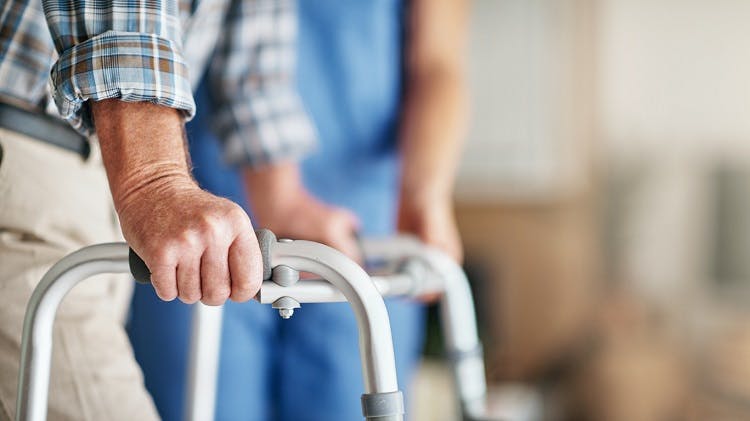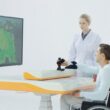Stroke Survivor Assistive Devices
Regaining Self-Sufficiency: Home Modifications and Assistive Technology for the Recovery of Strokes
A stroke damages the brain by obstructing blood flow, which can result in a variety of cognitive and physical deficits. Although recovering from a stroke is a lengthy process, there are numerous resources available to assist survivors in regaining their independence and enhancing their quality of life. In order to empower stroke survivors and their carers, this article examines three important areas: mobility aids, communication gadgets, and house changes.
Table of Contents

Mobility Aids: Encouraging Independence and Mobility
Stroke Survivor Assistive Devices
Balance, coordination, and muscle strength can all be impacted after a stroke. Mobility aids give people stability and support so they may move through their environment with assurance and safety. Typical mobility assistance consist of:
- Canes and Walking Sticks: Walking sticks and canes provide a basic means of assistance for stability and balance. Different cane types—from single-point canes to quad canes with four legs for improved stability—offer differing degrees of support.
- Walkers: These offer a stronger level of assistance when walking. Conventional walkers may or may not have wheels and have four legs. The additional amenities that rollator walkers provide, such as seats and brakes, improve comfort and safety.
- Wheelchairs: For people who are unable to walk, manual wheelchairs offer autonomous mobility. Motorized assistance is provided by electric wheelchairs to facilitate easier mobility.
- Scooters: For people with restricted mobility who have to go longer distances or tire easily, these motorized vehicles provide a comfortable alternative.
Selecting the Appropriate Mobility Aid:
Stroke Survivor Assistive Devices
The demands and capabilities of each person determine which mobility aid is best. Considerable elements include:
- Degree of support needed: How much assistance is required when walking or transitioning (going from a sitting to a standing position)?
- Strength and endurance: Does the person need a motorized wheelchair or can they push a manual wheelchair?
- Setting: Will the mobility aid be used in an indoor, outdoor, or mixed environment?
Occupational therapists are qualified to evaluate each patient’s needs and suggest the best mobility assistance.
Communication Tools: Rediscovering Your Voice
Stroke Survivor Assistive Devices
Language and communication abilities can be impacted by stroke. Communication gadgets enable people to engage in everyday activities and express themselves clearly. Typical tools for communicating are:
- Level of assistance required: Low-Tech Augmentative and Alternative Communication (AAC) Systems: Picture boards with phrases or symbols that people can point to or utilize to express fundamental requirements are examples of AAC systems.
- Speech-Generating Devices (SGDs): These electronic gadgets let users create speech synthesized from a pre-programmed vocabulary by choosing words or phrases.
- Mobile Apps: There are a plethora of speech recognition and communication apps for tablets and smartphones that provide customized communication choices and text-to-speech conversion.
Selecting the Appropriate Communication Tool:
Stroke Survivor Assistive Devices
The degree of communication challenges and personal preferences determine which communication equipment is best. Considerable elements include:
- Degree of speech impairment: Can oral communication be achieved, or does total dependence on a communication device become necessary?
- Dexterity and motor skills: Is the person able to utilize a touchscreen interface or point to symbols?
- Cognitive abilities: Is the person able to recognize and pick the right words or symbols from a communication device?
Speech-language pathologists are qualified to evaluate communication requirements and provide the best tools and techniques.
Making Safe and Accessible Environments in Your Home
Stroke Survivor Assistive Devices
It may be necessary for stroke survivors to make changes to their houses in order to guarantee safety and encourage self-sufficiency. The following are important areas to modify at home:
- Bathroom Adjustments: Adding a higher toilet seat, putting non-slip mats down, and installing grab bars in the bathtub or shower can all greatly lower the chance of falls.
- Kitchen Modifications: Pull-out shelves and lowered counters can facilitate easier object retrieval.
- Doorway Modifications: Installing lever handles rather than knobs can make doors easier to use, and widened entrances can make room for wheelchairs or walkers.
- Ramps: Installed at gateways and entrances, ramps remove steps, a significant barrier for people with restricted mobility.
- Lighting: Good lighting enhances visibility and lowers the risk of falls throughout the house.
Resources and Financial Support:
Stroke Survivor Assistive Devices
Making changes to your home can be costly. Government programs, disability grants, and veteran’s benefits are just a few of the services that can be helpful. Occupational therapists can also suggest do-it-yourself or inexpensive adjustments.
In summary:
Stroke Survivor Assistive Devices
Strong tools that enable stroke survivors to regain independence and enhance their quality of life are assistive gadgets and home adaptations. Stroke survivors and their caregivers can provide a supportive atmosphere that encourages recovery and a return to meaningful activities by investigating available options and collaborating with healthcare providers.


